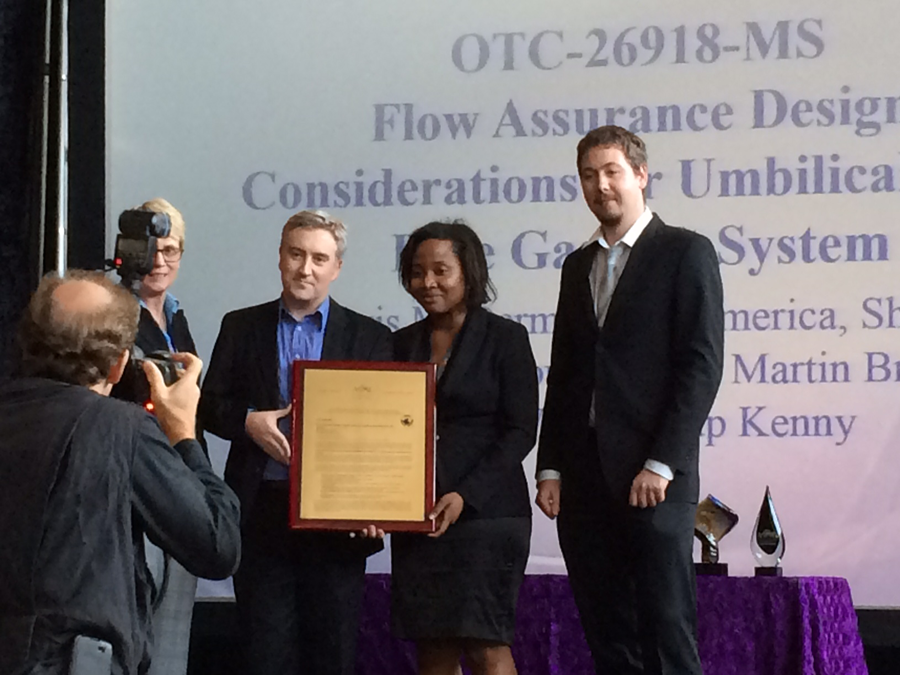Artificial intelligence (AI) is impacting the future of virtually every industry and every human being. Everywhere you look, AI and robotics are being used in the real world, from robot vacuums in our homes to self-driving cars and appointment bookings, even enabling us to plan ahead for global events like the possibility of another pandemic.
Working in AI, I am at the forefront of transforming complex and dynamic data into actionable intelligence, by combining domain knowledge with digital technologies. I find it fascinating, because when you pull it back to the basics, we are part of a growing trend allowing computers to become smarter, enabling them to carry out functions that humans currently can do much better. While AI is not new, advanced machine learning techniques are revolutionizing the concept – not as some would have it to replace human intelligence, but rather to bring analytical capabilities to multiple large and disparate datasets on a near real-time basis.
I began my career in the United Kingdom, graduating from Imperial College London with a master’s degree in chemical engineering. Following this, I began working as a flow assurance consultant with Wood PLC and moved through more senior consultant roles before relocating stateside to Houston, Texas.
Following my relocation, I established myself within our U.S. team as a lead consultant and was then promoted to business manager for Wood’s Energy and Flow Assurance group. Here, I made it my mission to drive home the importance and acceptance of data analysis and machine learning techniques to provide insights in numerous industries, including oil and gas, which brought on my promotion to operations manager for the Digital Transformation and Innovation group, in addition to my prior role.
This unique position allows me to oversee two disciplines, both Digital Transformation and Innovation as well as Energy and Flow Assurance within Wood’s Americas Operations. It is an exciting time to be on Wood’s Applied Intelligence team. I am able to leverage both our industry leading engineering expertise and digital technologies to solve challenges facing the oil and gas industry, like operability, reliability and maintainability. In addition to this, I ensure Wood’s domain knowledge and expertise are also being extended to other industries through our projects and clients, including manufacturing, chemical companies, mining projects and more.

AI technology is shaping up to be the next major source of economic growth, predicted to add an estimated $15.7 trillion to the global GDP due to AI-driven business practices. In my work, I get to witness how AI and machine learning are advancing the ways in which we operate, specifically within monitoring and inspections. For example, 3D models are enabling better project visualization to help our clients with planning, integrity and operator training. With the use of digital technologies, pipes can be virtually laid so we can determine more accurate lengths and orientations of piping for new tie-ins.
Alternatively, the use of 3D imaging and scans of subsea equipment using advanced robotics allows for integrity assessments, which assist calculations regarding how much a pipe has moved or, as we refer to it in the industry, how much a pipe is “walking.” We even hold operator training using 3D models and advanced visualization technologies (VR, AR, MR and XR). These “gamified” environments allow important and advanced training where individuals can perform virtual walk-throughs of the asset and practice performing simple tasks prior to field deployment, giving them first-class training, as well as providing an adequate experience to ensure efficiency and utmost safety once on site.
AI and machine learning models are also being used to optimize processes and equipment on site, reducing GHG emissions and the overall carbon footprint of many of our projects. Tracking these emissions is an excellent starting point, currently allowing companies to identify emission sources, as well as problem areas. Often, we find that even a simple change in operating conditions can result in more favorable operations overall – effective solutions which we might struggle to pinpoint without AI.
At Wood, we are actively working with renewable energy clients and companies focused on the energy transition to optimize their energy generation projects, like those at wind and solar farms. On wind farms, the use of AI is being explored to control aspects like the operating parameters of individual turbines, and on solar farms AI can be used to analyze generation and consumption of energy on site.
Using historical data, or even simulations of processes to capture outliers, allows us to become better prepared for the challenges we are facing in the energy transition. With this insight, we can more quickly analyze and respond to project behavior as well as ensure that we are future-ready, enabling industry to achieve desired outcomes under an array of varying conditions.
Demand for this type of insight as well as automation, across industries, is growing exponentially. It seems that most businesses are now realizing the value of AI and robotics and are actively pushing full steam ahead to implement this digital technology into their daily operations, bringing operations across the globe into the future and making the energy market, specifically, easier to analyze and respond to.
Not only are advanced technologies like AI ensuring that we are prepared to tackle the future, but they are also driving efficiency in the work we do, allowing us to see minimum savings of around $1 million per year on individual projects, as we deliver resilient solutions for a sustainable future. This alone is allowing us to unlock funds, previously used elsewhere, to confront the challenges we face around the energy transition and tackling climate change.
The digital and automated solutions that we currently have at our fingertips are enabling companies across the globe to improve performance and agility while driving efficiencies at every level of their organizations, transforming operations with tailored and strategic guidance that delivers measurable business value, at faster speeds than ever before. These robust, automated and cloud-based solutions that we are implementing each day not only optimize our projects and progress toward a cleaner future, but they are keeping employees safe, reducing and managing multiple risks, like cybersecurity, health and safety, and regulatory compliance. These fit-for-purpose uses help bridge a gap to support remote operations and workers while ensuring reputational management for businesses.
It is an exciting time to be a part of the industry. Digital technology is adapting quickly to tackle our biggest challenges and ensure that businesses are future-ready and resilient as we focus on a more sustainable future for all.
Headline photo: Deriving Value from Difference panel at the SSTB conference (Feb. 2020). Panel seated from L to R: Barbara Stewart, Courtney Battle, Amol Bakshi, Shirley Ike and Nikhil Shahane.

Shirley Ike oversees both digital transformation and innovation as well as energy and flow assurance within Wood’s Americas Operations. In her role as business/operations manager within the applied intelligence team at Wood, she leverages industry leading engineering expertise and digital technologies to unlock client challenges across energy and industry. Shirley Ike |LinkedIn
Oil and gas operations are commonly found in remote locations far from company headquarters. Now, it's possible to monitor pump operations, collate and analyze seismic data, and track employees around the world from almost anywhere. Whether employees are in the office or in the field, the internet and related applications enable a greater multidirectional flow of information – and control – than ever before.


